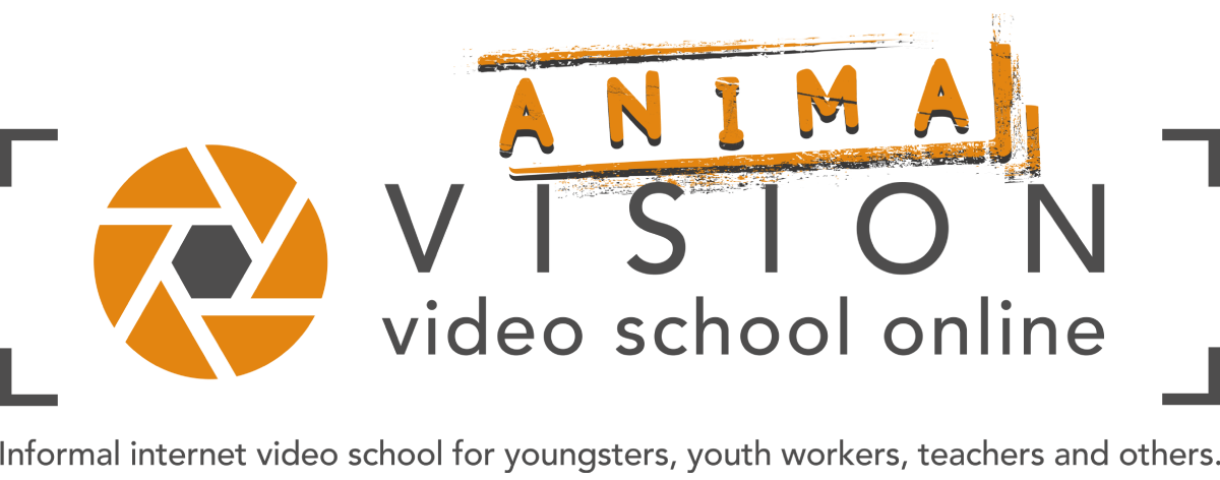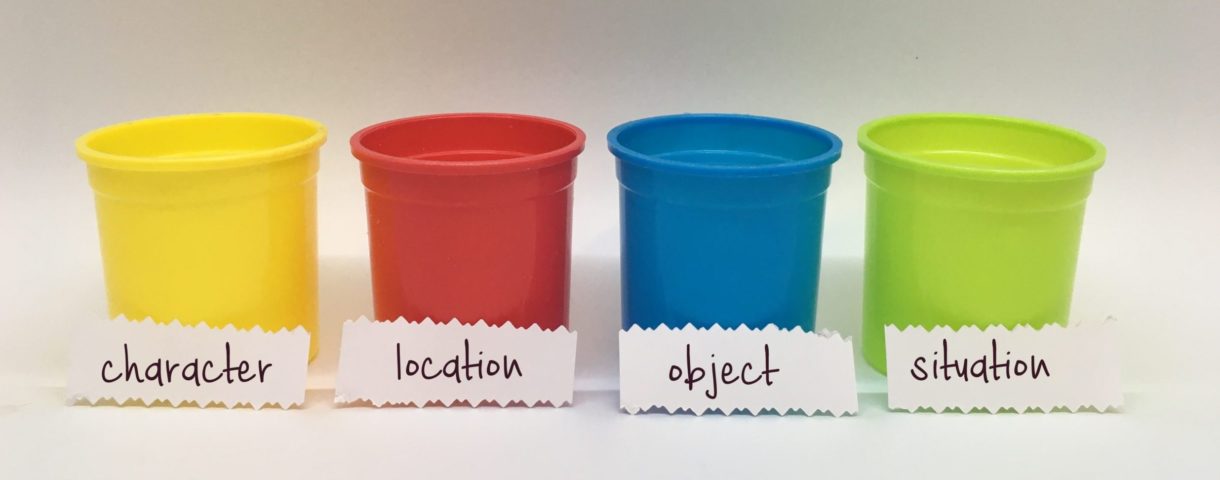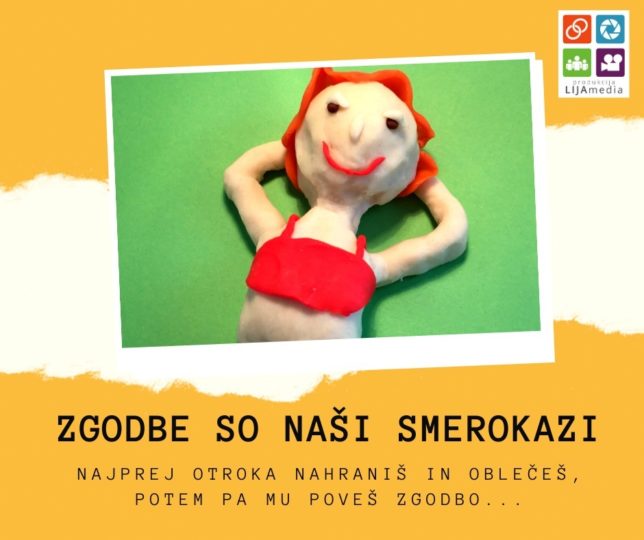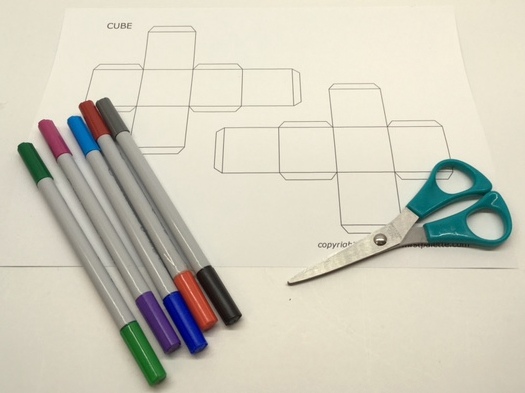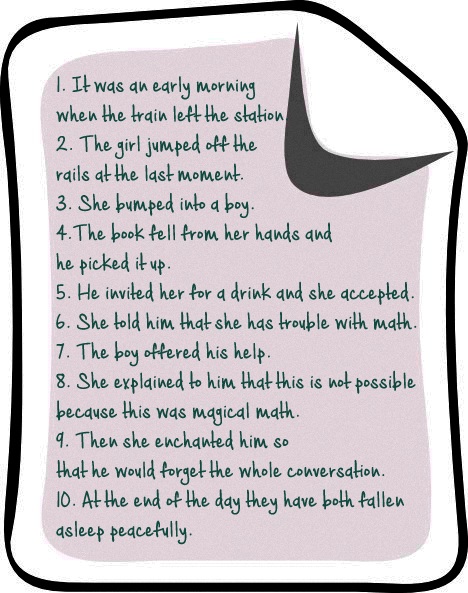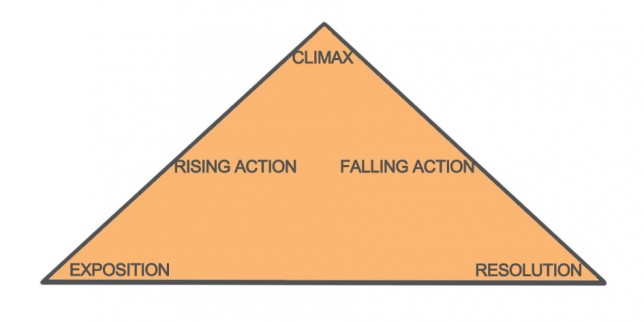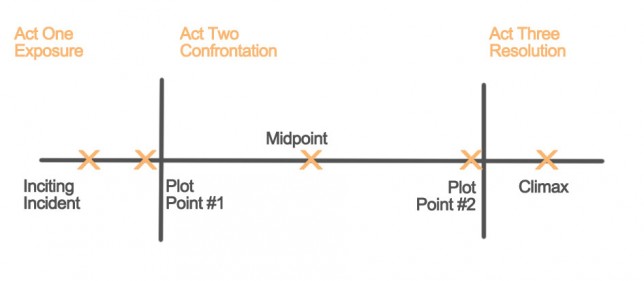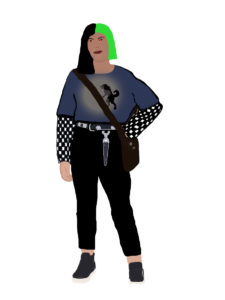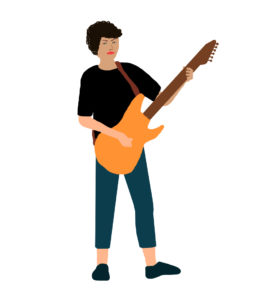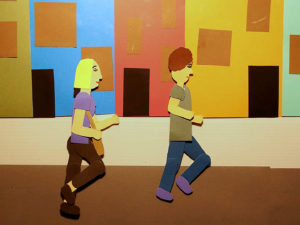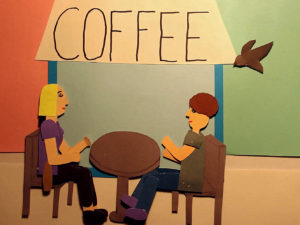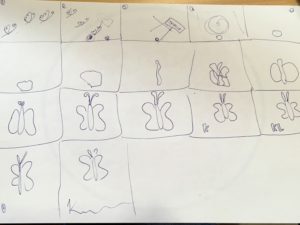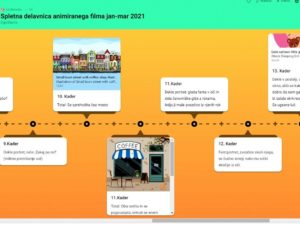Introduction
A good story is a good foundation for a film to be understandable and make sense to the viewer. Even if the film looks good or has incredible special effects, a poorly-written story will not engage the viewers. Creating a story is an independent process from a film genre or technique that you will be using. Making an animation movie, however, offers some possibilities that are hard to execute in feature or documentary movies (like transformation…) and therefore offers a bit more space for story development on a very imaginative level or on topics that are hard to deal with. To be able to tell a good story you should know the storytelling principles on one hand and understand the film language as expressive means on the other. In this chapter we will explain some basics of developing an interesting story and translating it into film language.
AnimaVision in action |
|
|
|
||
Equipment and tools
In order to develop a story you will need some pencils and paper, a board if you want to make it more visual. If you are more fond of working in digital environment, a computer and access to the internet will be needed. To make a storyboard you can print a storyboard template (find the link at the end of this chapter), you can create a storyboard also in digital environment (for example in Padlet).
Main section
Storytelling has an extremely long history ranging from cave paintings to unwritten and written myths, legends, fairy tales, to novels, newspapers, photos, TV and movies. Nowadays we also have access to social media, where each and every individual can share their story with the whole world in very short time and with almost no cost. Telling stories can help you deal with your personal experiences or situations you face in the outside world and is a good means to express your imagination and opinions.
We need stories to explain ourselves to each other.
An inspirational quote about storytelling created during the Animavision project saying: Stories are our signposts. First you feed and dress a child, after that you tell him a story.
It is often recommended that stories should be based on what moves someone inside or what is happening in their immediate surroundings. Although this may seem uninteresting at first glance, stories created in this way can feel really authentic and touch the viewer on a personal level. Every small event in your life can be transformed into a story that someone will be able to relate to. There are no good or bad environments to find a story, and even if you can’t find a story after looking really hard, you can use that as your story material that many will be able to associate with.
Story ideas are usually very chaotic an the beginning, sometimes your mind could be completely blank when you face a task of making up a story. We are very different in articulating them, but they are hidden inside everyone. For some it is very easy to see situations that happen to them or in the outside world that they can turn into stories. Others, however, struggle with this part a lot, they feel there is something to tell but are unable to express it.
The initial idea for a story can be anything: a character, a sentence, a philosophical concept, an image … A philosophical, ethical or moral dilemma can also be very appealing to the viewers.
How to find a story?
There are a lot of methods that can boost your creativity and help translate your thoughts and feelings into a story, especially a film story. In this chapter, we will present several that have proven useful to us, but we encourage you to look for more yourself in the internet, your book store, library or from people in your environment.
Story cubes
Story cubes are sets of several dice with pictures on all sides that can be used as an inspiration or skeleton for a story. There are many story cubes sets that you can find on the market, you can also use a story cube application, print out the templates from the internet for free or create story cubes completely on your own.
For the beginning, you can print empty cube templates and create three different story cubes out of them. On the first, draw or write examples of different characters (a girl, a dwarf, a football player, a hairdresser, a teacher, a firefighter …), on the second, draw or write examples of different locations (at home, in the shop, at school …), and on the third draw or write different situations (a wedding, a picnic, a running competition…).
You can start creating your story with a popular fairy tail sentence Once upon a time…. And then take a lead into the direction that the cubes are sending you to.
You can easily create story cubes yourself by using a cube template.
Find a link for free cube templates at the end of this chapter. You can create even more story cubes by adding objects, antagonists, more locations …
Cans with ideas
Another method proved useful is to use cans with ideas. In one can you put small pieces of paper with different characters, in the other can put pieces of paper with different locations, in the third can put pieces of paper with different objects, and in the fourth can put pieces of paper with different situations. Look for examples described in the story cubes part. Try to add some unusual ideas; for example an alien for a character, a spaceship, or maybe toilet for a location … Then pick one paper from each can and develop a story out of it.
You don’t have to stick strictly to the ideas you picked out, you can use them only to boost your creativity and then develop a story in a different direction or with different characters and location..
Create your own cans and fill them with your proposals for all four categories. Then you can use them as a story making tool.
Complemented sentences
If you work in a group, you can develop a story in the way that each participant tells a sentence that continues the topic of a previous one. Pay attention to the order: the first participant should start. A sentence can be something like: One morning on a bus station there was a boy reading a book. The second participant should create the final sentence. This is very important to direct the storytelling process towards a certain ending. The end can be something like: And they remained friends forever , or: At the end of the day they were all satisfied with what they had accomplished.
After you have defined the first and last sentences, the third participant can continue with sentence number two, the fourth participant with sentence number three, etc. Depending on the number of participants involved, the story has to develop in a way that leads to the last sentence.
An example of a story from one of our film workshops:
Participant 1 (the beginning):It was an early morning when the train left the station.
Participant 2 (the end): At the end of the day they have all fallen asleep peacefully.
This was the frame of our story. The next participants filled in the story in a way which lead from the beginning to the conclusion, and at the end the story was the following:
Film competitions and call for entries
Many times your main topic can be determined by some film competitions or call for entries for art works that you can find in your local, regional, national or even international environment and you or your group decide to join. The topics that we stumbled upon were: environmental protection, climate change, women stories, fighting against violence, promoting equality … The call, the topic and a deadline (sometimes even a prize) can help enormously to be able to focus and finish a film at a certain time and we recommend it as a relevant source of motivation.
If you are new in stop motion you can start your film with something simple, animated in one location with not many shots and characters . But if you are more ambitious or you are a group, then you can afford to develop a film with more shots, more characters and more different character features.
What are the elements that each story should consist of?
We covered how to access the story, now we will go through some of the elements of the story that will help you form it.
A comprehensible story should answer the following questions:
- What’s going on?
- Where is this happening?
- Who are the characters involved?
- When is the story happening?
- Why is the story happening?
Story structure
Apart from basic questions the story has to answer, it should also have a clear structure that gives it clarity and rhythm. The structure usually consists of an introduction part, the middle part and the conclusion.
A classical story structure has been researched and described by Aristotle in ancient Greece. A classic drama is usually divided into five parts, or acts, that create a dramatic arc: exposition, rising action, climax, falling action, and resolution.
Classical five act drama structure
Another popular approach is a three act structure. Syd Field, an American author, in the 90’s came up with his theory of the three act structure by analysing many popular films and created a good basis for movie structure that many authors use. According to his theory the first act usually takes up the first quarter of the film in which characters, the character’s goal, as well as the conflicts or obstacles that are preventing them from achieving their goal, are set. The second act covers the next two quarters of the film where the character tries to achieve the goal, and the conflict escalates. The third act is the last quarter of the film in which the story is resolved with an achievement or a failure. You can read more about the three act structure in the Vision part of this video school in the chapter Plot and character analysis.
Syd Field’s three act film structure
There is a lot of knowledge to be found on a story structure that you can study going even into the tiniest of details. Apart from the structure of your film you can, for example, study a structure of each scene, the characters‘ development, the suspense arc …‘
Building a character
After having your story written it is time to bring in your main character or characters. Building good characters is essential to make your story believable. Building a character requires much more deep study than it may appear at first sight. It is not just about the outside looks but also about their inner motives.
When you build a character you have to ask yourself the following questions:
- What does they look like?
- What does they see?
- What does they say?
- What kind of person are they?
- What does they feel?
- What does they think about?
- What does they hear?
- What does they learn?
You can sketch your characters first to get a good visual of them. This is especially important if you work in a larger group or online so everybody can have the same template to create characters accordingly.
In the first and second picture you can see the digital sketches of two characters and on the last two pictures you can see how they actually looked cut out from a paper and used in a film.
How to make the character engaging for the audience? What motivates us to get involved in their struggle and want to know what will happen next? We can give a character positive personality traits for example, but people like negative characters as well. Overall, it is important to see part of ourselves in the character or wish that we could be like him or her.
During the story, the character should change either for positive or for negative. If they don’t change, other characters around them or the situation have to change.
Film anatomy and creating a storyboard
After understanding the storytelling principles, creating a story based on them and defining the characters, a filmmaker has to be able to translate the story into a film language. Understanding and speaking a film language means understanding the following principles:
- framing for film
- camera angles
- location
- light and shadow
- dialogue
- the use of sound, sound effects and music
- the art of editing
From our experience, we would also add that creating a film demands a lot of management and social skills like: planing, time management, finances, leadership and communication, working with people… Some of the above listed elements you can find described in the Vision part of this video school. We invite you to dig deeper into the chapters that interest you.
We will not put an exact link to the chapters, just browse through them and find what can be useful for you. You will learn a lot more from experience so it is the best that you start your own projects as soon as possible.
Equipped with film language knowledge, it is now time to prepare your storyboard that will be your map for creating your film.
Storyboard
In the chapter Writing a synopsis, script, storyboard and shooting schedule in the Vision part of this video school we already explained something about preparing the storyboard. We will repeat it once again in this chapter, since it is a crucial step to proceed in making your own stop motion animation film.
In pictures above you can see two examples of a storyboard, the first one is a simple hand drawn storyboard and the second one is more complex made in digital environment.
A storyboard is similar to a comic strip. Each scene is drawn shot by shot, showing the framings and composition that should be used. Also movement – of the characters, objects or the camera – can be shown with arrows. Under each shot you can describe the action or dialogue that takes place, the lightingyou need to use, and mention any other information that could be relevant durion the animation and then at the editing stage as well. The storyboard will be your guide during the preparation phase, so you will be able to define what kind of backgrounds do you need and their number, objects and characters you will have to create and which parts will be movable. You can create your storyboard by just writing it down or sketch it on a piece of paper, download a storyboard template at the end of this chapter, or create it in the digital environment.
Common mistakes
- One of the common mistakes is not having a strong or clear dramatic situation in your film that needs resolving. A film should have some good drama!
- Another common mistake is the lack of clear structure that properly resolves the plot into different scenes and settings, and where the viewers can easily follow the characters, the locations and what is happening.
- Don’t hesitate to put a lot of thought into a good dramatic flow, in which you create tension and dissolution. A diverse framing for film will also help to make your story clear and intense.
- Not making a storyboard will lead to confusion when filming more complex films, especially if you are working in a large group. Good ‘map’ can be a crucial step to your success.
Exercises
- Get yourselves story cubes (or make them) or use some other techniques described in this chapter and play story games with your friends.
- Watch different films with varying lengths and try to identify a story structure behind.
- Imagine your favourite character and think about why you like them so much.
- When you watch a film try to follow the framing that was used for a particular film or a scene in a film.
Related topics and links to external resources
Read more about writing a synopsis, developing a script, a storyboard and a film plan for your project in the chapter of the Vision part of this handbook Writing a synopsis, script, storyboard and shooting schedule, and more about film structure in the chapter Plot and character analysis.
Methodology
Developing a story can be a fun and creative process where you should let the ideas flow freely. Especially in the early stages and when working in a group. There can be no wrong idea. A little later you can make a selection from the many ideas you came up with, but in the beginning you should brainstorm with no limits. For those of you who are more visual, you can create a vision board with pictures, drawings and even objects that connect you to the idea or topic that you would like to explore or use visually (color palette, picture style…) Whenever you spot a good drama, a good obstacle that your character has to overcome, ‘something’ special that the story has, keep on it, don’t let it go by, trust your gut feeling. It is sometimes not easy to detect or find this ’something special‘ that the film needs to have, so respect your ideas when they appear to be good.
When you spot a good story – go to more constructive phase by creating a clear structure, defining characters, making a storyboard …
Terminology
story cubes, story structure, classical drama, dramatic arc, three act structure, character development, storyboard
